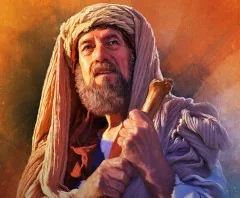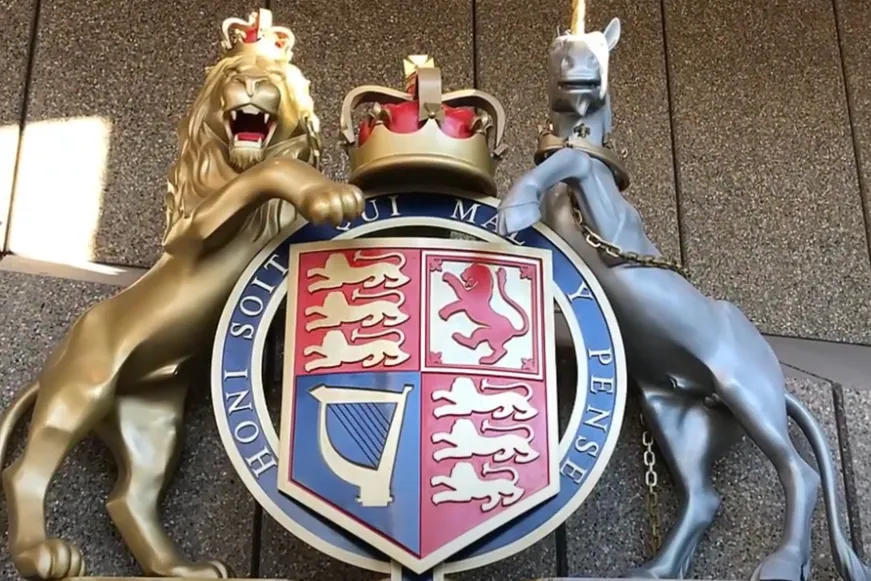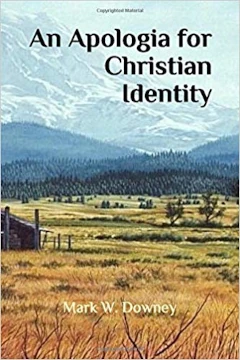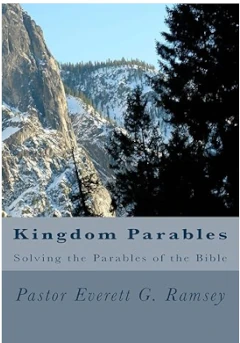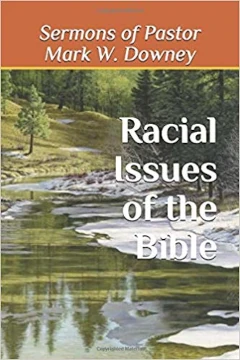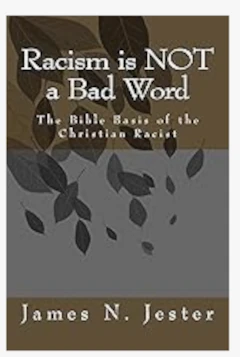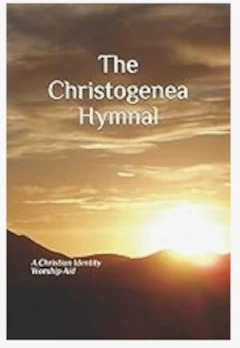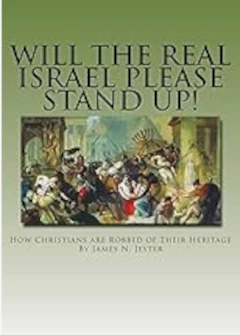Israelite Migrations - Part 3
THE DIASPORA OF JUDAH
By Pastor Jim Jester
November 10, 2019
Scripture Reading: Isaiah 1:1-4
“The vision of Isaiah the son of Amoz, which he saw concerning Judah and Jerusalem in the days of Uzziah, Jotham, Ahaz, and Hezekiah, kings of Judah. Hear, O heavens, and give ear, O earth: for the LORD hath spoken, I have nourished and brought up children, and they have rebelled against me. The ox knoweth his owner, and the ass his master's crib: but Israel doth not know, my people doth not consider [understand or regard their Creator]. Ah sinful nation, a people laden with iniquity, a seed of evildoers, children that are corrupters: they have forsaken the LORD, they have provoked the Holy One of Israel unto anger, they are gone away backward.” – KJV
Scripture Exposition
What a picture Isaiah gives in these last two verses of our reading! “O nation full of sin: a people weighted down with crime; a generation of evil-doers; children that deal corruptly; have forsaken Yahweh, and give no thought to God.” [my paraphrase]
Isaiah was one of the prophets to the southern kingdom of Judah. In chapter two, he further elaborates on the sinful condition of God’s people (the topic of the first five chapters):
“O family of Jacob, come, and let us go in the light of the Lord [The prophet calls them to repentance – A return to Yahweh]. For you, O Lord, have given up your people, the family of Jacob, because they are full of the evil ways of the east, and make use of secret arts like the Philistines, and are friends with the children of strange countries. And their land is full of silver and gold, and there is no end to their stores; their land is full of horses, and there is no end to their carriages. Their land is full of images; they give worship to the work of their hands, even to that which their fingers have made.” – Isaiah 2:5-8, BBE
Perhaps we should take note of these things listed:
- They are full of the evil ways of the east: Eastern philosophies and practices. King Asoka (304-232 BC), known as the St. Paul of Buddhism said, “One shall not condemn another religion or race by word or deed.” In other words, tolerance (Dharma). Truly, this is the philosophy of America and the world today.
- They make use of the secret arts: The KJV says, “soothsayers like the Philistines”. In our day, fortune-tellers and dark arts. The theater and TV is full of it.
- They are friends with strange children: The KJV says, “they please themselves in the children of strangers.” Many of our people are happy about adopting multi-ethnic children into their home. They also boast of any racial mixture of their own.
- Their land is full of silver and gold: Treasures; plenty of money – but most of it is based on debt;
- And stores: Plenty of goods;
- And horses and carriages: for the modern world, lots of cars;
- And images: The KJV says “Idols” (in our day, billboards and TV);
- And they worship their own works: Brenton says “the land is filled with abominations, even the works of their hands.” Self-esteem and pride in their accomplishments; and a love of things.
Doesn’t this sound exactly like America or any other modern country? Now, some of these things are not wrong in themselves, and some are terribly wrong; but they had left out Yahweh in their knowledge, and that makes everything wrong since it is all placed above Him.
Back to chapter one of Isaiah, we see that repentance is required of God’s people:
“Wash you, make you clean; put away the evil of your doings from before mine eyes; cease to do evil; Learn to do well; seek judgment, relieve the oppressed, judge the fatherless, plead for the widow.” – Isaiah 1:16-17
To repent is proof of our commitment to our Lord. It is not an option; it is a necessity. God would not want us to appear hypocritical in saying we are Christian, yet living in a compromised or worldly way.
“Come now, and let us reason together, saith the LORD: though your sins be as scarlet, they shall be as white as snow; though they be red like crimson, they shall be as wool.” – Isaiah 1:18
What a wonderful promise. The idea here is that we are made white from the stain of sin. It is not the sin that is turned from red to white but the person. Some have suggested that the verse is meant to be a question God is asking of fallen Israel, which I feel makes sense. One translation actually puts it this way:
“Come now, and let us have an argument together, says the Lord: how may your sins which are red like blood be white as snow? how may their dark purple seem like wool?” – Isa. 1:18, BBE
The implication is, “No way!” Sin will not be white just because you might want it considered so; and therefore justify yourself. Sin cannot be turned white. It is always a dark thing and a stain on a person’s record. It is impossible for sin to be white as snow. The previous verses (16-17, “cease to do evil”) set the context for the understanding of verse 18. This is a popular verse, and many try to claim it as their own; but this promise of forgiveness and cleansing is for Yahweh’s people:
“Who is a God like unto thee, that pardoneth iniquity, and passeth by the transgression of the remnant of his heritage? He retaineth not his anger for ever, because he delighteth in mercy. He will turn again, he will have compassion upon us; he will subdue our iniquities; and thou wilt cast all their sins into the depths of the sea.” – Micah 7:18-19
Who is God’s heritage and who is us? Israel! “For the LORD’S portion is his people; Jacob is the lot of his inheritance.” – Deut. 32:9
The modern church uses various methods to supposedly convert people to their cause such as some kind of ritual of “magic words”, “repeat after me” prayer, Roman Road to conversion, etc., but seldom do they mention the responsibility of the person to repent from their sins. The only verse we really need that makes repentance very clear is:
“He that covereth his sins shall not prosper: but whoso confesseth and forsaketh them shall have mercy.” – Pro. 28:13
This is all our people need to know to properly serve our King. The whole book of Isaiah deals with servanthood and its many aspects.
II Chronicles 7:14 also confirms this concept of repentance:
“If My people, who are called by My name, shall humble themselves and pray, and seek My face, and turn from their wicked ways, then I will hear from Heaven and will forgive their sin and will heal their land.” – MKJV
It is not just any people, but “my people” (God’s chosen race). And, notice these prerequisites for revival:
- Humble themselves
- Pray
- Seek My face
- Turn from wicked ways
Again, this only applies to whom? “My people” – those who are called by Yahweh’s name. And what is God’s name? I am the God of Abraham, Isaac, and Jacob (our forefathers).
“And God said to Moses again, You shall say this to the sons of Israel, Jehovah the God of your fathers, the God of Abraham, the God of Isaac, and the God of Jacob, has sent me to you. This is My name forever, and this is My title from generation to generation.” – Ex. 3:15, MKJV
This does not apply to just anyone, but only to the race of Israel.
Brief Review
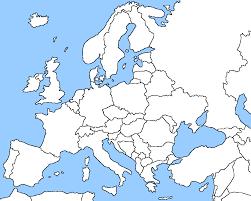
In the first lesson, on the Celtic Nations, we traced the earliest migrations of Israelites between 2051-1103 B.C. For the most part this concerned Western Europe including the British Isles.
In the second lesson, we traced the Diaspora of Israel (841-700 B.C.) by Assyria; and learned about the origin of the Scythians. This concerned Eastern Europe and a large part of Asia.
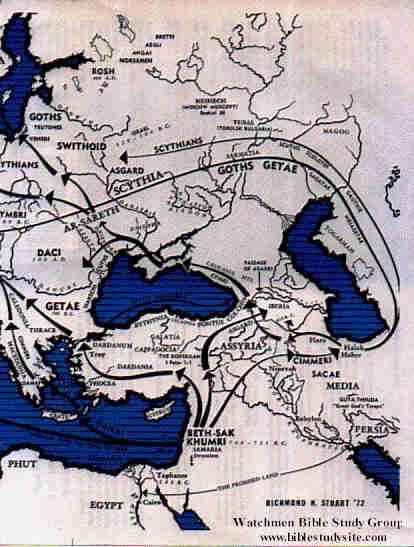
Note: Halah and Habor, Iberia, Caucasus Mountains, Black Sea, Arsareth (Ukraine), Troy.
In this third lesson, we will trace the Diaspora of Judah (653-525 B.C.). You may recall from the last lesson that many cities of Judah were taken by Assyria. All that remained now was the city of Jerusalem.
[The next 5 sections are a condensed version from chapters 8 and 9 of Book Two, Identifying Biblical Israel Today, by Lawrence Blanchard.]
Identification of the Scythians
We discovered in the last lesson that the Scythians were Israelites from the northern house of Israel. The Assyrian’s called them “Khumri” (after king Omri), but after 705 B.C., the name of “Scythian” was consistently used in the ancient historical records.
“The Scythians themselves say that their nation is the youngest of all nations… and the Greeks call them Scythians. …From their first king…to the crossing of Darius into Scythia was, in all, one thousand years.” –Herodotus, The Histories, 4.7
Another historian, Col. Gawler, analyzed Herodotus’ record and said:
“Now Darius’ expedition against the Scythians was about 500 B.C., and 1000 years before, that brings us to the time of Moses.”
Gawler was saying that if Darius was king of the Medes around 500 B.C. and the Scythians date their length of existence as beginning 1000 years before Darius, that would mean the birth of their nation was about 1500 B.C. Remember that the Exodus, the beginning of the Israelite nation, was 1493 B.C. That is very close to 1500 B.C. The birth of the Scythian nation is the same time as the birth of the Israelite nation. They are the same people called by different names.
There were two main branches of the Scythians: the western and the eastern. The western Scythians fled to the Black Sea region (724-720 B.C.) as they escaped before the Assyrians could capture them. The eastern Scythians were those Israelites who were captured and taken to the cities east of Assyria (Halah, Habor).
In 653 B.C., the Israelite Scythians and Israelite Cimmerians make an alliance against Assyria. They had good reason – Assyria had decimated the whole northern house of Israel and 46 cities of Judah.
The Fall of Assyria (612-607 B.C.)
Not many years later after the Israelite alliance, the Babylonians revolted against the Assyrian Empire and joined the Scythian army in attacking Assyria. Assyria finally fell in 607 B.C. Although Babylon is credited with conquering Assyria, it was because they had the Scythians on their side.
“The Scythian king of Ecbatana came to the help of the Babylonians. Nineveh as captured and destroyed by the Scythian army.” – Encyclopedia Britannica, quoted by Collins, Israel’s Lost Empires, p. 213
The Scythians were the military power all over Asia for the next 28 years. After that, they returned to their homelands: the Black Sea Scythians returned to that area and the eastern Scythians to Assyria. Shortly thereafter, the eastern Scythians began a massive migration further east to the Caspian Sea area (612 B.C.).
The Captivity of Judah (604-585 B.C.)
Just a few years after the fall of Assyria to the Babylonians in 607 B.C., Babylon became the next dominant power. As Babylon conquered many kingdoms, so it did to the house of Judah. In 604 B.C., Babylon began its first deportation of the Judeans under King Nebuchadnezzar.
“In the third year of the reign of Jehoiakim king of Judah came Nebuchadnezzar king of Babylon unto Jerusalem, and besieged it. And the Lord gave Jehoiakim king of Judah into his hand, with part of the vessels of the house of God; and he carried them into the land of Shinar to the house of his god: and he brought the vessels into the treasure-house of his god. And the king spake unto Ashpenaz the master of his eunuchs, that he should bring in certain of the children of Israel, even of the seed royal and of the nobles; youths in whom was no blemish, but well-favored, and skilful in all wisdom, and endued with knowledge, and understanding science, and such as had ability to stand in the king's palace; and that he should teach them the learning and the tongue of the Chaldeans.” – Daniel 1:1-4, ASV
This was the beginning of the 70-year captivity of the house of Judah that had been prophesied by Jeremiah: “And this whole land shall be a desolation, and an astonishment; and these nations shall serve the king of Babylon seventy years” (Jer. 25:11).
A second deportation occurred in 595 B.C. under Nebuchadnezzar and he took King Jehoiachin, his family, the temple treasures and 10,000 Judeans (recorded in 2 Kings 24:10-16).
The third and final deportation occurred in 585 B.C. Nebuchadnezzar besieged Jerusalem for two years and then took King Zedekiah, killed his sons, put out Zedekiah’s eyes, took more captives, and burned the city (recorded in 2 Kings 25:1-9).
At the end of the 70-year captivity, Babylon was destroyed as predicted by Jeremiah (25:12). Cyrus the king of Persia and Darius the Mede over-threw Babylon and set up the empire of the Medes and Persians. In Cyrus’ first year (534 B.C.), he made a decree that anyone of Judah who wanted to return to Jerusalem to rebuild the temple could go. This is recorded in the book of Ezra. A remnant did return from the tribes of Judah and Benjamin along with the Levitical priesthood. Josephus states that two tribes were in Jerusalem in his day:
“There are but two tribes in Asia and Europe subject to the Romans, while the ten tribes are beyond the Euphrates till now [1st century A.D.], and are an immense multitude, and not to be estimated by numbers.” – Flavius Josephus, The Antiquities of the Jews, Book XI, Chp. V, Sec. 2.
The historian, Josephus, verifies that two tribes returned while the ten tribes of Israel were “an immense multitude” in distant lands.
Scythians Leave Assyria (c. 579 B.C.)
About this same time, many more Scythians left Assyria and went to the east (beyond the Caspian Sea) as far as Bactria, the Oxus River and the upper Jaxartes Basin. Many of their brethren had previously migrated to the west (Black Sea area) after the fall of Assyria.
These Israelite Scythians became known as “Massagetae” and “Sakka”. Herodotus said of them:
“The Massagetae are said to be a great and warlike nation… by many they are regarded as a Scythian race… In their dress and mode of living the Massagetae resemble the Scythians… their favorite weapon is the battle-axe …each man has but one wife.” – Herodotus, The Histories, 1.201
“The Sacae or Sakka were the blond peoples… Strabo allies them with the Scythians as one of their tribes…” – Madison Grant, Passing of the Great Race, p. 411
The Massagetae killed King Cyrus when he attempted to conquer them. They were also the people who established the Parthian Empire, which presented a balance of power to Rome.
Scythians to Russia (575-525 B.C.)
Historians document yet another Scythian migration shortly after the house of Judah was taken captive by Babylon. These Israelites migrated through the Caucasus Mountains into South Russia, making Crimea their new home.
“In the fifth century BC, Herodotus reported the Scythians as occupying South Russia from the Carpathians to the Don River. In the Fourth Book of his Histories, he provides us with a detailed account of them. Undoubtedly, these Scythians migrated northwards through the Caucasus Mountains. Archaeological evidence of the Scythians occupation of South Russia, starting about 575 BC, has confirmed Herodotus’ writings. The evidence is in the form of Scythian burial mounds found scattered all over the Russian Steppes.” – Capt, Missing Links Discovered in Assyrian Tablets, p. 159
Historian Frederick Haberman provides us an epitaph from one of the tombs found in South Russia:
“I am Jehudi, the son of Moses, the son of Jehudi the Mighty, a man of the tribe of Naphtali, which was carried captive with the other tribes of Israel, by prince Shalmaneser, from Samaria during the reign of Hoshea, King of Israel. They were carried to Halah, to Habor – which is Cabul – to Gozan and to the Cheronesus – which is the Crimea.” – Haberman, Tracing Our Ancestors, p. 129
Dr. Blanchard brings to our attention concerning these quotes: “Note from the above reference the connection between the Israelite tribe of Naphtali, which was taken captive in the initial captivity of the house of Israel by Assyria in 724 B.C., and their new home in the Crimea of South Russia by 575 B.C. The Scythians of Southern Russia were Israelites at that time” (Identifying Biblical Israel Today, Book Two, p. 61).
Royal Seed-line Preserved
God declared that Israel would be blind to their own identity; and for a time they would be without a King (Hosea 3:4). Now, it should be noted that God swore that the people of Israel would forever have a King of the tribe of Judah, and an heir of David ruling on the Throne over Israel, with Priests to minister for as long as the sun and moon are in the sky, as long as there was day and night. God made this promise to David – a vow that could not be broken, because God cannot lie.
The House of Judah was conquered and deported by Babylon during the reign of King Zedekiah. The King of Babylon killed Zedekiah’s sons before him and put out his eyes. However, King Zedekiah also had two daughters. These daughters were taken under the protective custody of Jeremiah in his Divine mission to transplant the Throne of David in the British Isles. In an unprecedented event, the King of Babylon gave Jeremiah complete freedom to go wherever and do whatever he wished; he even gave his own general to Jeremiah as a servant, and a grant of money to provide for his needs. What pagan king does such thing for a lowly prophet of a conquered nation – unless God had something to do with it for His purposes?
The Judeans took Jeremiah and the king’s daughters into Egypt. From there, Jeremiah and Baruch, and party, traveled to Spain. Afterwards they intended to go to the Isles and Denmark. But they did not make it to Denmark because of a storm; and so, they ended up in Ireland.
The Hill of Tara, capital of ancient Ireland, a royal residence, “its palace magnificent to behold, a rival of Solomon’s”, was the seat of each succeeding High King of Ireland until abandoned in AD 565. From the book by Evelyn Janes, The Mysterious Hill of Tara:
After the fall of Jerusalem in the year 583 B.C., Gedaliah was made Governor of the cities of Judah. Mizpah was his headquarters. Jeremiah went to Mizpah and dwelt with him. Later on Ishmael attacked and killed the governor and took the people captive. Jeremiah and the king’s daughters were among them (chapters 39-41 of Jeremiah).
Johanan, an army captain, rescued the people. He carried them by force to Egypt, in spite of Jeremiah’s pleas not to go there. God had told the people they would be safe if they remained in the land (chapter 42:11-12)….
“But Johanan the son of Kareah, and all the captains of the forces, took all the remnant of Judah, that were returned from all nations, whither they had been driven, to dwell in the land of Judah; Even men, and women, and children, and the king's daughters, and every person that Nebuzaradan the captain of the guard had left with Gedaliah the son of Ahikam the son of Shaphan, and Jeremiah the prophet, and Baruch the son of Neriah. So they came into the land of Egypt: for they obeyed not the voice of the LORD: thus came they even to Tahpanhes” (Jer. 43:5-7).
Jeremiah and the princesses had been taken by force and so would escape the wrath of God. The name Tahpanhes, means flight. Sir Flinders Petrie said, “To this day Tahpanhes or Defneh is called the ‘Fort of the Jew’s Daughter’.” [Judah’s Daughter] Here an historian shows proof that the Royal Party were indeed in Egypt. No more is said of the fate of the little party but they would no doubt take the first opportunity to leave for a place of safety. – p. 5
…Irish historians record that a notable man, a Patriarch or Saint arrived in Ireland about 580 B.C. accompanied by a young Eastern Princess and his scribe. They were shipwrecked off the coast of Ireland en route to Denmark, from Spain. The Patriarch was called Ollam Fodhla, a name meaning “Wonderful Prophet”. Ollam denotes in Hebrew the possessor of “hidden knowledge”, Fodhla in Hebrew is “wonderful” or in Celtic “revealer”, the two together describing a Hebrew Prophet. His scribe was called Simon Bruch or Baruch. The princess was called Tea Tephi, meaning “Tender Twig” or Tamar Tephi, “the tender beautiful”. She and Eochaidh, the reigning King of Ireland, met fell in love and were married. They were crowned standing on the sacred Lia Fail [Stone of Destiny/Jacob’s Pillow]. They arrived at the time of Eochaidh’s coronation. – p. 3
Ezekiel chapter 17 reveals a wonderful plan of God. …“Thus saith the Lord God; I will also take of the highest branch of the high cedar, and will set it; I will crop off from the top of his young twigs a tender one, and will plant it upon an high mountain and eminent: In the mountain of the height of Israel will I plant it: and it shall bring forth boughs, and bear fruit, and be a goodly cedar: and under it shall dwell all fowl of every wing; in the shadow of the branches thereof shall they dwell.” King Zedekiah of Jerusalem was taken captive to Babylon by King Nebuchadnezzar along with his sons. Jeremiah was taken forcibly to Egypt with the two young daughters of Zedekiah. Highest Branch = King? High Cedar = Throne? Young Twigs = Royal Children? Tender One = Princess?
Scripture, History and Traditions have proven that Zedekiah and the Princesses were in Egypt and that a prophet, and two young princesses along with a scribe arrived in Spain. Then after a time a Sage, a Patriarch or Saint accompanied by an Eastern Princess and a lesser person by the name of Brach or Baruch were shipwrecked in Ireland. These cannot be just coincidences. Jeremiah and the young princess Tea Tephi in arriving in Ireland fulfilled the prophecies of God (Ezek. 17:22-23).
“And the remnant that is escaped of the house of Judah [royal line] shall again take root downward, and bear fruit upward” (Isa. 37:31). The Heremon (“High King of Ireland”, Eochaidh) was a descendant of the Tribe of Judah through the line of Zarah, son of Judah of Trojan and Milesian kings. Tea Tephi was a descendant of Pharez-Judah, twin of Zarah, thus healing the breach. The Royal House of Judah was one again. Our own Queen is descended from this now united Royal House – the occupant of the Royal Throne which our Lord and Savior shall soon occupy, the One of whom we pray, “Come quickly Lord Jesus.” – p. 6
So the royal seed line of King Zedekiah was preserved in Ireland through his daughters. But there is still more to this story – a prophecy of our coming King, the Lord Jesus Christ, who is to take this throne.
“And thou, profane wicked prince [Zedekiah] of Israel, whose day is come, when iniquity shall have an end, Thus saith the Lord God; Remove the diadem, and take off the crown: this shall not be the same: exalt him that is low, and abase him that is high. I will overturn, overturn, overturn, it: and it shall be no more, until he come whose right it is; and I will give it him.” – Ezek. 21:25-27
“Overturn” is used three times successively? This was not just for emphasis. God declared that this throne would be overturned three times and history proves it.
- The throne and Jacob’s Pillar Stone were brought to Ireland by Jeremiah (from Judah/Zedekiah, 1st overturn). The Irish called this Stone the Lia-fail, upon which all the kings and queens of Ireland, Scotland, Wales, and England have been coronated since recorded history.
- This Stone was next overturned to Scotland by Fergus the Great in c.498 A.D. (2nd overturn), and was kept in the Abbey of Scone (thus called “Stone of Scone” by the Scots).
- This Stone was finally overturned to England by Edward I in 1296 (3rd overturn); where it resides in Westminster Abbey under the Coronation Throne of Britain and is thus called the “Coronation Stone”.
Yahweh our God set up this throne for His people, which our Redeemer shall one day ascend. Since this is now past history, we must assume that the time of Jesus’ return to rule from this throne is near.
The prophet Jeremiah is buried in Ireland. He was of the tribe of Levi. The High Priest of Israel wore a breastplate with 12 precious stones representing the twelve tribes of Israel. The stone for Levi was the Emerald. Is it a coincidence that Jeremiah is the Patron Saint of Ireland and that Ireland is referred to as the “Emerald Isle”?
Conclusion
The God of Abraham, Isaac, and Jacob speaks to the judeo-Christian world:
“Oh, you sinful nation! You people burdened down by iniquity! You offspring of those who keep practicing what is evil! You children who corrupt whatever they do! ‘They’ve abandoned the LORD; they’ve despised the Holy One of Israel; in their estrangement, they’ve walked away from me.’” – Isa. 1:4, ISV
How can the judeo-influenced world deny the facts of history? When will the judeo-Christian world accept these facts confirmed by the Bible and embrace the identity message and the racial truth it presents? When will they repent?
“He that covereth his sins shall not prosper: but whoso confesseth and forsaketh them shall have mercy.” – Pro. 28:13
… to be continued

